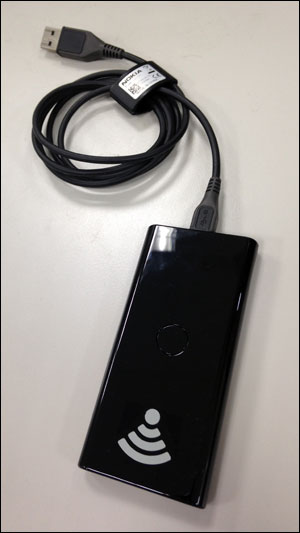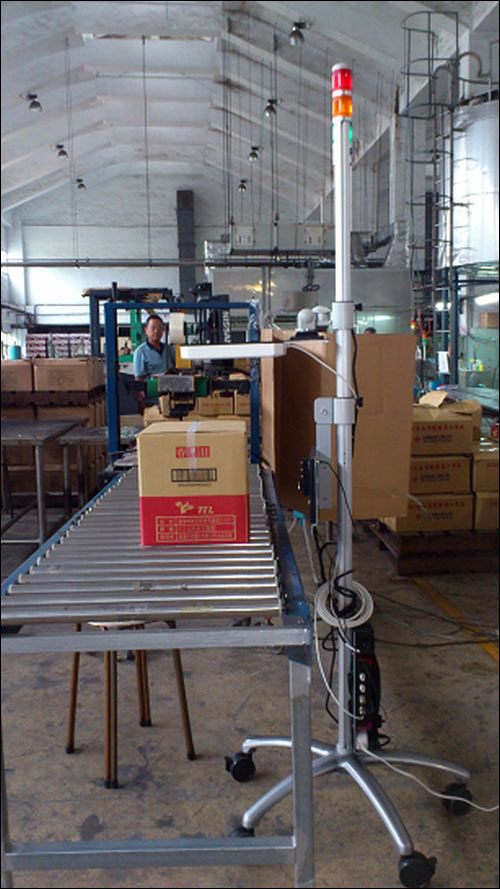Taiwan Tobacco & Liquor Corp. (TTL) has deployed a radio frequency identification solution to ensure its products’ authenticity, and to track the goods through its supply chain. The company is providing several hundred of its channel partners with a $30 reader that transmits a 433 MHz signal to read data encoded to EPC Gen 2 passive ultrahigh-frequency (UHF) tags. The solution, including the 433 MHz readers, was provided by RFID technology company EPC Solutions Taiwan.
TTL makes fine wines and high-value liquor, as well as lower-cost alcoholic and tobacco products. The firm operates 13 beer and liquor manufacturing facilities and four tobacco factories, and serves a total of 40,000 channel partners—retailers that sell its products. The company’s recent concern has been with counterfeits of its fine wines and liquors; at the time that it was investigating solutions, in 2013, TTL sold its high-value products through approximately 200 channel partners throughout China.

The market in China is divided into geographic regions, and TTL prices its products accordingly, depending on the particular region in which they will be sold. The firm sought to ensure that its goods were not being funneled to a different geographic region and thus sold at an incorrect price, and that counterfeit versions were not being passed off as an authentic TTL wines or spirits. It also wanted to be able to prove to its channel partners—and, ultimately, to consumers—that what they were buying was genuine. To that end, the company began working with EPC Solutions Taiwan in March 2013 to create an authentication solution, according to T.H. Liu, EPC Solutions’ president.
The company wanted a system that would enable it to track products throughout its own supply chain—from bottling and packing to shipping, and on to the goods’ receipt at a third-party distribution center in China. It then wanted its channel stores to be able to confirm authenticity via a handheld reader, by interrogating each label on a bottle of wine before placing that bottle on a store shelf for sale.
Initially, EPC Solutions proposed a system consisting of standard EPC Gen 2 passive UHF RFID tags and an off-the-shelf handheld reader that operated at 902 to 928 MHz. However, Liu says, handhelds designed to read such tags typically cost about $2,000 apiece. Since the company wanted to furnish several hundred channel stores with the devices, he adds, that price made the system too expensive for its needs. EPC Solutions created a low-cost alternative, by designing a 433 MHz handheld transceiver chip built into a small device that could be plugged into a laptop, table or smartphone. Although the unit transmits at 433 MHz, it can receive transmissions from UHF tags at 902 to 928 MHz. The read range, however, is considerably less than that of a standard UHF reader operating at that frequency band.
A UHF tag will absorb 100 percent of the energy from an RF signal received from a 902 to 928 MHz reader, Liu explains. “On the other hand,” he states, “if a tag antenna is designed for 902 to 928 MHz, but the energy is carried by a 433 MHz carrier, the energy will be absorbed much less than 100 percent. That means the reading range is short.” In fact, Liu says, the range is reduced to about 5 to 20 centimeters (2 to 7.9 inches).
However, at its factory and warehouse in Minsyong (a township located in Taiwan’s Chiayi County), as well as at its distribution center in Fukeng, China, TTL required a much longer read range. Therefore, EPC Solutions installed three UHF 902 to 928 MHz Alien Technology ALR-9900+ fixed readers that interrogate tags affixed to the bottle caps—one reader dedicated to reading the tags following the bottles’ sealing at the bottle-capping station, another deployed at the packing station and a third located in the palletization area.

At the bottle-capping station, once the cap is attached to the bottle, operators affix the RFID tag to the top of that bottle via a non-removable adhesive. The reader automatically interrogates that tag and then forwards the data to TTL’s back-end server, where software (designed with EPC Solutions’ help) links the tag’s unique ID number with the batch number and product type.
When the bottles reach the packing station, staff members place six tagged bottles in each carton and attach a tag to the box. All seven tags are then read by the second interrogator to link the bottle and carton tags.
Finally, as the cartons are loaded onto pallets in a third area, a fixed reader at that location reads the carton and bottle tags, linking that information to the tag attached to the pallet, thereby marrying all products to that specific pallet. Typically, 24 cartons are loaded onto each pallet.
The loaded pallets are then moved to the warehouse, where two more fixed ALR-9900+ readers await—one for goods inbound from the factory, the other for products en route to shipping. Employees also use two handheld ATID AT870 UHF RFID readers to perform periodic inventory checks at the warehouse.
At the time of shipment, as goods are loaded onto trucks, they pass through a final fixed reader portal (another ALR-9900+ model), which updates the software, indicating that the pallet has been shipped to the distribution center in Fukeng. At the DC, ALR-9900+ fixed readers are installed to identify when a pallet is received, while AT870 handhelds are used for inventory tracking. The collected data is then uploaded to the software on TTL’s server, to which the distribution company and TTL both have access.
At the store, workers can plug a 433 MHz reader into a tablet or smartphone and download an application from TTL to automatically link the device to TTL’s server software. They can then confirm that a particular bottle is authentic, by reading its tag and retrieving authentication data from the server. The firm also receives data from each read performed by the store, thereby verifying that the bottles are at that specific site. This information helps TTL confirm that its products have been delivered to the intended store, and have not been routed to another area of the country.
The data culled from these handheld and fixed interrogators provides TTL with a view into where its products are in the bottling and shipping process. Management can not only identify and address problems—such as bottlenecks—in real time, but also analyze the data historically to identify ways in which long-term efficiencies could be improved. The company is scheduled to begin tagging other liquor products next year.
“This RFID system helps us monitor the life cycle of our liquor,” says Y.C. Chang, TTL’s director. “I am thinking to include our tobacco manufacturing in the future.”
Chinese consumers, Liu says, are more likely to purchase wine if they can be assured that each bottle is an authentic, original product, and not counterfeit. By offering RFID, he explains, Taiwan Tobacco & Liquor Corp. has “a very advanced and fancy advertise spotlight to encourage channel partners to promote TTL’s products and feel more confident.” Since the RFID system’s debut, the quantity of channel partners has increased from 200 to about 260.
EPC Solutions Taiwan is making the solution available to other customers wishing to provide their partners with a low-cost 433 MHz reader for authenticating tags, Liu says. Moreover, the company has designed a dual-band tag antenna (designed for both 902 to 928 MHz and 433 MHz transmissions) that would allow a longer read distance of about 30 centimeters (11.8 inches) when read by a 433 MHz reader.

